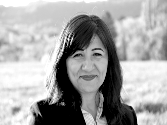Irrespective of our differences, we all have central human needs and emotions. It is vital and valuable to acknowledge our differences. In my work, I help my clients accept differences. As a female exec coach from a minority background, I believe that the conversation about difference needs to be opened and developed to create deeper authentic relationships. The uncertainty around how to handle diversity stems from the lack of knowledge, exposure, and training but essentially because we are uncomfortable to talk about the discomfort around diversity.
Having worked all around the world doesn’t come without its challenges, and even though I believe I am open-minded, inclusive, and bias-free, I am human. Thus, when I began working in the D&I space I felt it only right to examine my own unconscious bias and dig deeper to discover how and if my unconscious bias was affecting my behaviour.
In my view, women need to put themselves forward. I have often found questioning myself, when given a new opportunity or having been chosen for a project, asking myself, “Am I good enough?” Yes, I am and so are you!
So it was the revelation for me when I took the Implicit Association Test (IAT). Mahzarin R. Banaji developed the IAT. Banaji, a professor of psychology at Harvard University and co-author of Blindspot, along with Anthony Greenwald and Brian Nosek, created the test to help people recognize unconscious bias, and now this test is being used by companies to help employees understand that hidden biases are real. The simple battery of tests can be taken in approximately ten minutes and can be modified to assess unconscious bias in different categories, for example, whether white test-takers are likelier to associate “good” words with white faces more quickly than with black faces. (They are, and black test-takers show the reverse results.) The IAT isn’t meant to embarrass people; instead, it asks what steps we could take to improve the situation. When I took the IAT online, I was astonished by my results. Here I am an Indian woman, teaching, living, and breathing diversity and inclusion, and yet I found I had an implicit bias about women! I realized I have a preference, and none of us is exempt.
When I was growing up, men and women had different roles. Men in my family had power and authority. In my childhood home, men’s voices were more significant than women, and this stayed with me unconsciously until it showed up in my IAT results. One thing for sure is that these types of experiences act as collective filters when we make assessments and judgements of people around us. Besides this, research tells us that human beings have a natural tendency to place individuals into social classifications, and these groupings are often based on visual cues such as gender, cultural background, age, height, and body size. We also catalogue people based on their social context, professional roles, religious distinctiveness, and political affiliation. In my experience, the entire unconscious bias debate drives connection, it gives an opportunity to keep talking because unconscious bias is part of the human condition.
If we keep seeing males in positions of authority or power, something gets triggered to the unconscious brain, and thus we will continue to correlate men and power unless we start seeing females in positions of authority and power.
When it comes to gender bias, one thing is sure: it is hardwired into us. And sometimes, as women, this means we are biased against ourselves, believing the stereotypes we hear. Agreed, it is not intentional, and thus the unconscious people preferences we make that are formed in childhood, through our education, are often a mishmash of all our experiences that come together to form our predispositions and preferences. For a long time, psychologists and researchers have been tormented about the particular question of how we get to know what is going on inside the mind of a person. People do not consciously want to be biased but may not be aware that they are. But if we keep seeing males in positions of authority or power, something gets triggered to the unconscious brain, and thus we will continue to be biased unless we start seeing females in positions of authority and power.
If all your life you’ve been exposed to messages, consciously and unconsciously, you will automatically make these associations, and these will impact your decision-making and your choices, but if you become aware of it, you can slow down the process. When people believe that they are not biased uprooting the bias becomes very difficult to tackle. Unconscious bias is in all of us and often surfaces when we’re multitasking or when we’re stressed, as research shows. It comes up in tense situations when we don’t have time to think, and we try to make snap decisions. It’s part of our evolutionary fight-or-flight response. It’s automatic. We all have stereotypes that we are not aware of. That doesn’t make us bad people. However, becoming aware of unconscious bias but then ignoring how it shows up in our daily life is bad practice. The challenge is to be realistic and not to pretend to eliminate biases but to try to interrupt them so we can behave in ways that are aligned with our values.
Working against the odds is hard enough, but one thing we need to do as women is to lift each other up and not criticize each other. That is the only way we are going to advance. When someone has your back, believes in you, and provides a safe place for you to thrive, who knows what you can do? Women are the future. We must not separate but celebrate each other. Find a female mentor, a female supporter, and absorb all the power and knowledge she can give you. There is plenty of room for us; we need to take our space.
When people believe that they are not biased uprooting the bias becomes very difficult to tackle.
I have been very fortunate in my career. I’ve had many female allies who carried me when I thought I would fall. They saw a talent in me before I saw it, and these women aspired to be as high as men and lead high-level organizations. They were confronted with particular struggles with authority, and this went way back. I learned that everyone needs to be responsible for facilitating changes in attitude and behaviour. In organizations, a leader’s role is to develop their people, their talent, and their potential. And, please, you do not have to be head of a team or a department to be a leader. We lead families, groups, neighbourhoods, and of course, ourselves.
Women have a fear of letting down their guard and showing their vulnerability and compassion; it is perceived as being too dangerous. And I have seen that compassion and competence is a killer combination! The challenging part is to make ourselves visible, daring to celebrate our achievements by promoting ourselves. I, through my journey, help women to stand in their power, and the only way we women can do this is to know ourselves.
In my view, women need to put themselves forward. I have often found myself, when given a new opportunity or having been chosen for a project, asking myself, “Am I good enough?” Yes, I am and so are you!


